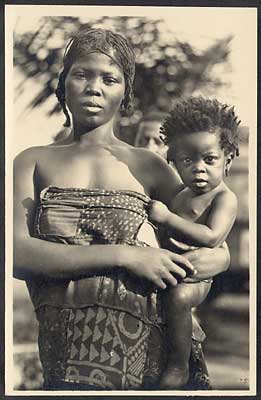
Section Two
Casimir Zagourski, Photographer

In the years between the two world wars, no photographer in central Africa visually articulated popular ideas about the peoples in this region more eloquently than Casimir Zagourski (1883-1944). His oeuvre consists of hundreds of black-and-white prints, exquisite in technical and aesthetic execution.
Zagourski was born Kazimierz Zagórski in what is today Ukraine to the family of a Polish nobleman. (In 1883 Poland was under Russian occupation, and the family had moved to Russia.) Zagourski served in the czarist air force, and following the Bolshevik Revolution in 1917 he returned to a now-independent Poland, but he found it difficult to make a living. In 1924 he settled in Léopoldville, the capital of the Belgian Congo, and opened a photographic studio. Zagourski became an accomplished photographer specializing in portraiture. He soon received commissions from the colonial government to cover official events, and he photographed colonial buildings and establishments.

His great passion, however, was to document the peoples of central Africa. Like his contemporaries, he believed that central African cultures were on the verge of extinction and that photography could preserve those aspects that were bound to disappear. Between 1929 and 1937, he set out on several expeditions to French Equatorial Africa (A.E.F.), Rwanda, Kenya and Tanganyika. With superb technique and great sensitivity he created portraits of Africans that--although taken in the tradition of anthropological photography--evoke a sense of closeness and empathy. He documented African dress and adornment, scarifications, coiffures, dances, masquerades and architecture. Accomplished images of landscapes give a sense of the sheer beauty of central and eastern Africa.
Zagourski selected 415 of these pictures and published them as numbered series of photographic prints on postcard stock in a portfolio he titled L'Afrique qui disparaît! (Vanishing Africa!). Deluxe editions of the portfolio, bound in embossed leather and carrying his imprint, can be found in several European collections. He also created exhibition prints, among them a set for display in the Belgian pavilion during the 1937 Colonial Exhibition in Paris. L'Afrique qui disparaît! is a masterpiece, articulating the vision of this gifted photographer and his views about Africans, which he shared with his contemporaries. Casimir Zagourski, who died in Léopoldville in 1944, left a lasting legacy of photographs that shaped the public's image of central Africa for many years to come.
Pictured above
A woman from the Sankuru region, Belgian Congo
Casimir Zagourski (1883-1944)
L'Afrique qui disparaît! Series 1, no. 27
c. 1929-1937, silver gelatin print on postcard stock
Eliot Elisofon Photographic Archives
National Museum of African Art
Smithsonian Institution
1987-241027-02